Sailing through the Galapagos Islands aboard the ultra-luxurious Hermes Mega Catamaran offers an unparalleled exploration of this natural paradise. The Hermes experience is meticulously curated to ensure exclusivity, intimacy, and an extraordinary encounter with the archipelago’s unique landscapes and wildlife. The top Galapagos visitor sites provide an in-depth look at the diverse flora and fauna that make these islands so special.
Main Islands and Visitor Sites
San Cristobal Island

- Tijeretas Hill & Interpretation Center: A prime spot for hiking and snorkeling, offering stunning views and insights into the island’s history. Visitors can observe the nesting frigatebirds and explore the small cove, ideal for snorkeling among colorful fish.
- Punta Pitt: Home to three species of boobies and magnificent views of the surrounding landscape. This site is one of the few places in the Galapagos where all three booby species (Nazca, blue-footed, and red-footed) can be seen together.
- Cerro Brujo: A beautiful beach with soft white sand and opportunities for snorkeling and swimming. The area is also a resting site for sea lions and a feeding ground for marine iguanas.
- Lobos Island: Renowned for its sea lion colony and opportunities for close encounters with marine iguanas, frigate birds, and blue-footed boobies. The clear waters make it an excellent spot for snorkeling and diving.
Española Island

- Gardner Bay: A pristine white-sand beach perfect for relaxing and snorkeling with playful sea lions. The bay is also a nesting area for marine turtles, and the waters are teeming with colorful fish and rays.
- Suarez Point: Famous for its spectacular bird-watching opportunities, including the renowned waved albatrosses and blue-footed boobies. The dramatic cliffs and blowhole offer stunning views, and visitors can observe the mating dances of the albatrosses.
Floreana Island

- Cormorant Point: Known for its olivine beaches and flamingo lagoon. The lagoon is one of the best places in the Galapagos to see flamingos, and the white-sand beach is a nesting site for green sea turtles.
- Post Office Bay: A historic site where visitors can leave postcards in a barrel, continuing a tradition dating back to whalers. The site also offers opportunities for snorkeling and exploring the nearby lava tunnels.
Santa Cruz Island
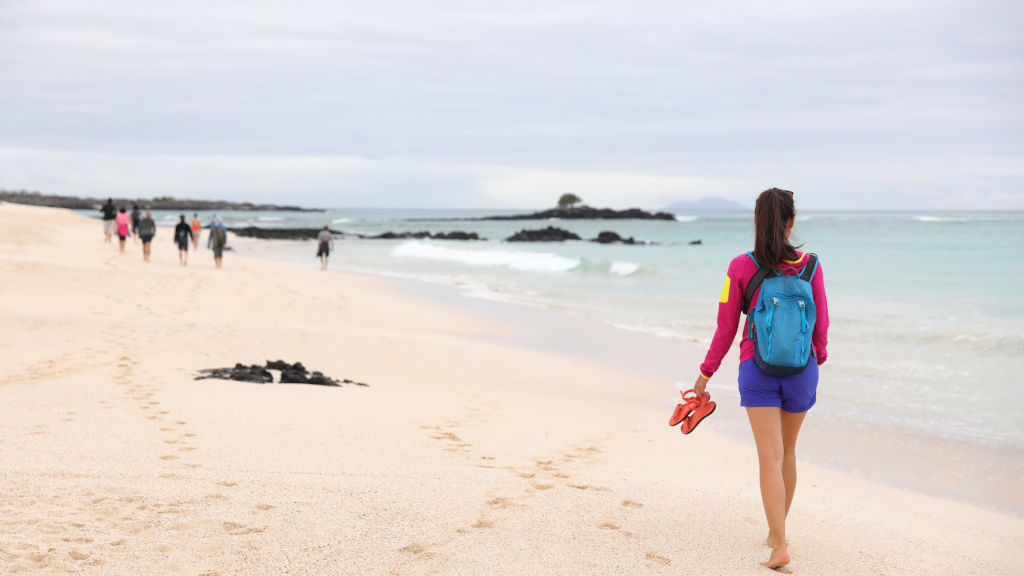
- Charles Darwin Station: A research facility dedicated to conservation and the breeding of giant tortoises. Visitors can learn about the various conservation efforts and see different species of tortoises up close.
- Santa Cruz Highlands: Lush highlands offering sightings of giant tortoises in their natural habitat. The highlands are also home to a variety of bird species and offer stunning views of the island. Explorers can bike their way up to a highland hacienda or hike through fascinating lava tunnels.
- Bachas Beach: A beautiful beach with remnants of WWII barges and flamingo ponds. The beach is also a nesting site for sea turtles, and the nearby lagoons are home to a variety of bird species.
- Dragon Hill: Named for its large population of land iguanas. The trail offers excellent opportunities for bird watching, and visitors can see flamingos, pintail ducks, and other species.
- Black Turtle Cove: A pristine mangrove estuary, perfect for spotting sea turtles and rays. The cove is also a nursery for blacktip and whitetip reef sharks.
Genovesa Island
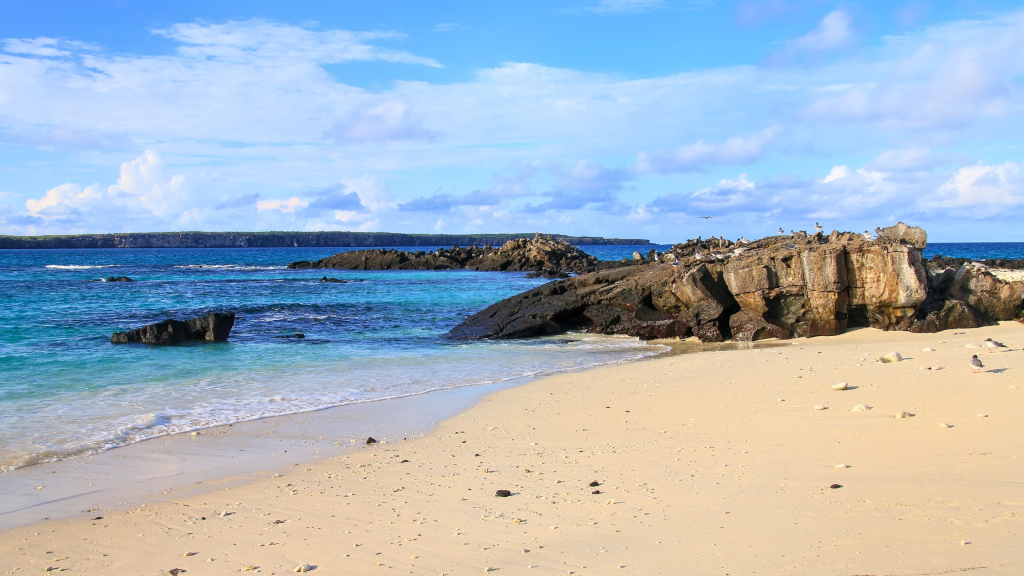
- El Barranco: Also known as Prince Philip’s Steps, it offers excellent bird-watching opportunities. The trail leads to a cliffside with spectacular views and is home to red-footed boobies and storm petrels.
- Darwin Bay: A picturesque bay home to a variety of bird species and a beautiful coral beach. The bay is ideal for snorkeling, and visitors can see rays, sharks, and colorful reef fish.
Isabela Island
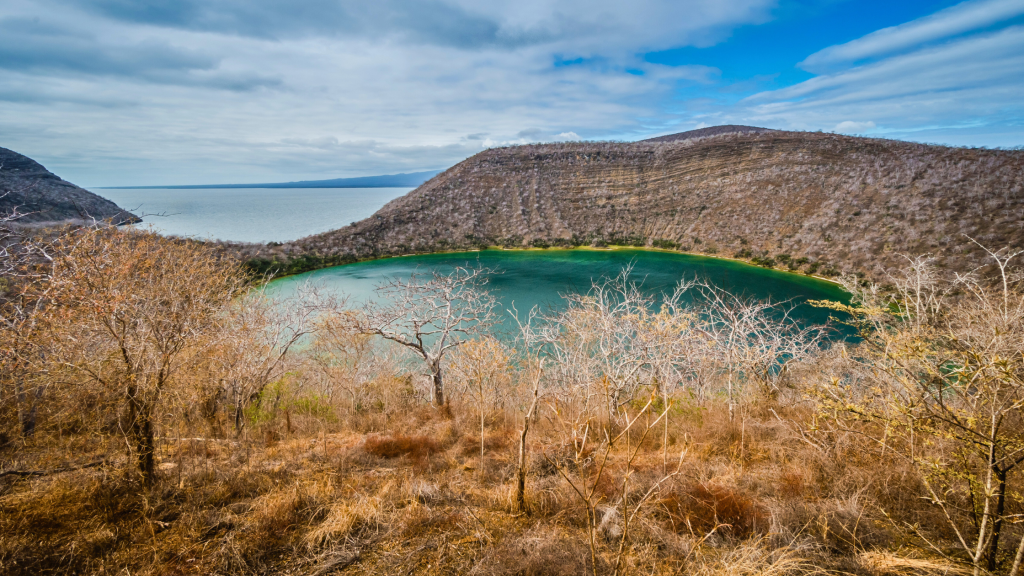
- Tagus Cove: A historic pirate hideaway with stunning views and excellent snorkeling. The cove’s cliffs are covered with graffiti dating back to the 1800s, and the waters are rich with marine life.
- Urbina Bay: Known for its dramatic geological formations and diverse wildlife. The bay was uplifted during a volcanic eruption in 1954, and visitors can see land iguanas, giant tortoises, and Galapagos hawks.
- Vicente Roca Point: A marine life hotspot, ideal for snorkeling and diving. The waters are home to sea turtles, rays, and a variety of fish, and visitors can also see the remnants of an ancient volcano.
Fernandina Island
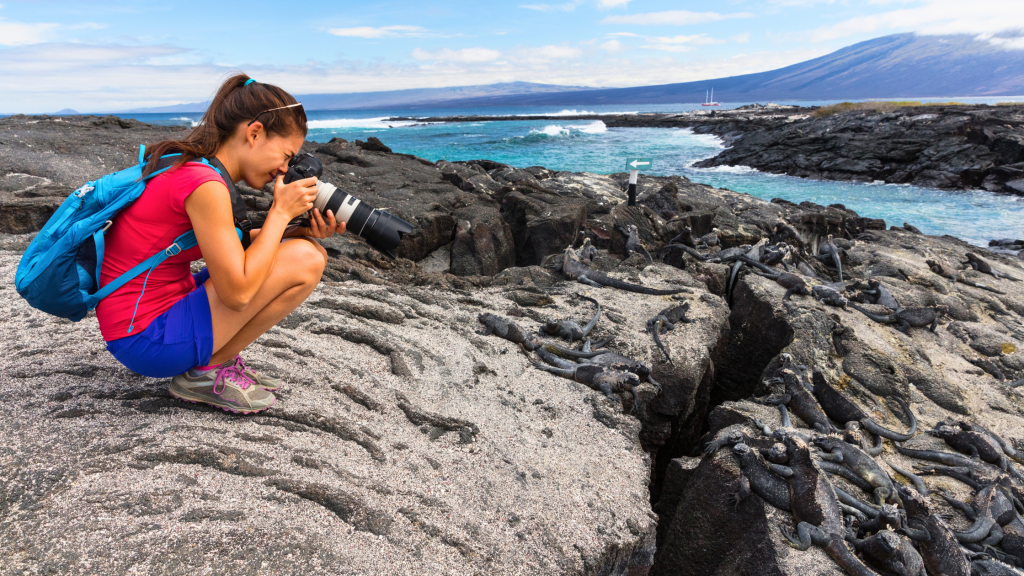
- Espinoza Point: Famous for its large colony of marine iguanas and flightless cormorants. The area is also home to sea lions, Galapagos penguins, and Sally Lightfoot crabs.
Santiago Island

- Puerto Egas: Features black sand beaches and a rich variety of wildlife. The beach is home to a colony of fur seals, and visitors can see marine iguanas, sea lions, and a variety of bird species.
- Playa Espumilla: A pristine beach and important turtle nesting site. The beach is also a good spot for snorkeling, and the nearby mangroves are home to flamingos and other bird species.
- Buccaneer Cove: A historic site with towering cliffs and fascinating geology. The cove was once a refuge for pirates, and visitors can explore the caves and rock formations.
Rabida Island
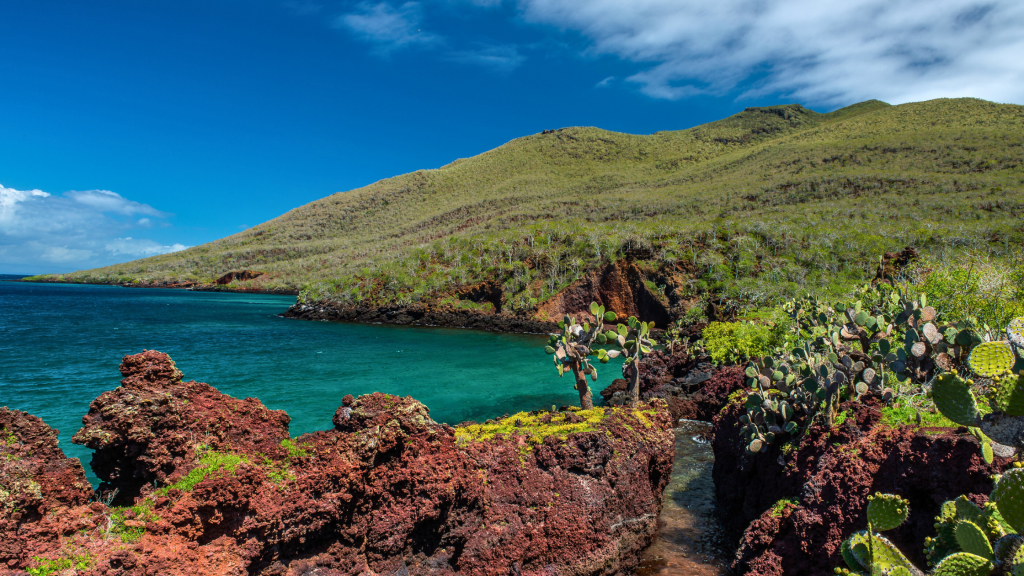
- Known for its striking red sand beaches and diverse wildlife. The island is home to a colony of sea lions, and the surrounding waters are excellent for snorkeling.
Bartolome Island
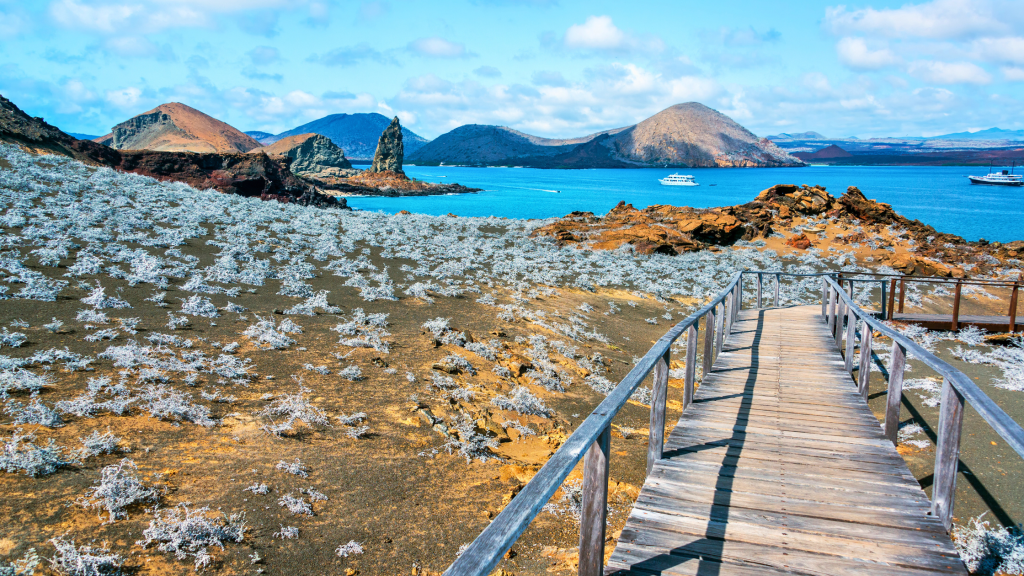
- Famous for Pinnacle Rock and panoramic views from the summit. The island is also home to Galapagos penguins, and the clear waters are perfect for snorkeling.
South Plazas Island

- Home to a large colony of sea lions, vibrant vegetation, and the archipelago’s only hybrid iguanas. The island’s unique vegetation includes the Sesuvium, which changes color with the seasons, and the Opuntia cactus.
Santa Fe Island
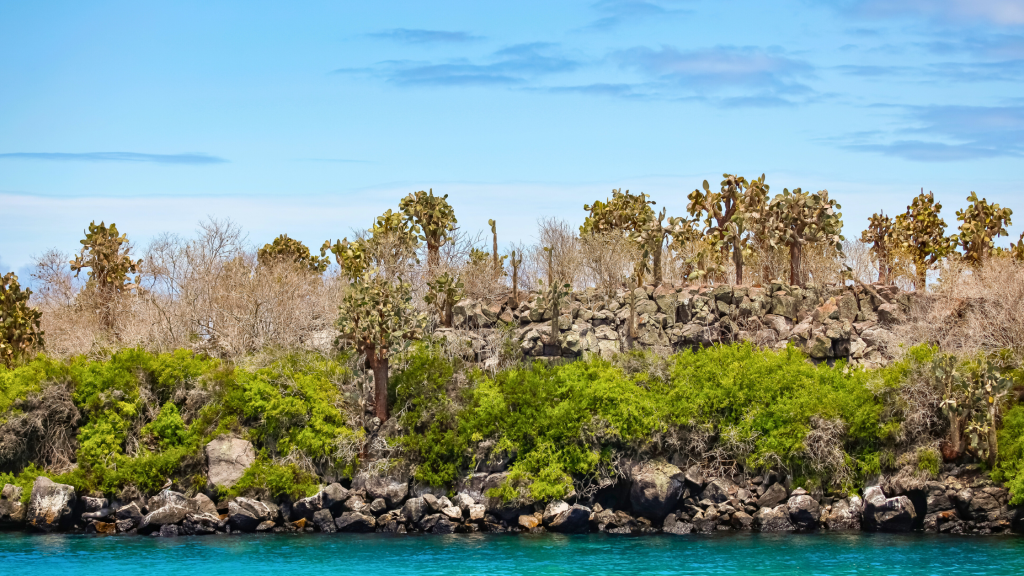
- Known for its unique species of land iguanas and picturesque bay. The island is also home to sea lions, and visitors can snorkel with rays and reef sharks.
Explore the Galapagos Archipelago the Hermes Way
Exclusive and Intimate Experience
Aboard the Hermes Galapagos luxury catamaran, visitors are immersed in the top Galapagos visitor sites within small, exclusive groups led by two naturalist guides. This approach not only enhances the intimacy of the journey but also ensures that each site is experienced without the crowds typical of larger tours. The itineraries are thoughtfully crafted to avoid overlap with other groups, allowing guests to fully appreciate the tranquility and natural beauty of each location. This careful planning helps preserve the pristine condition of the Galapagos Islands, maintaining their ecological integrity.
Luxurious Accommodations and Amenities
The Hermes Mega Catamaran boasts spacious suites with private balconies and jacuzzis, offering an opulent retreat after daily excursions to the top Galapagos visitor sites. Guests can enjoy a signature beverage menu (included in the price), highly personalized service delivered by two butlers, and the rejuvenating hammam with panoramic views of the Galapagos. The elegant dining area serves gourmet meals prepared by top chefs, featuring fresh, locally sourced ingredients.
Unmatched Service and Adventure
With a nearly 1:1 crew-to-guest ratio, Hermes ensures personalized and attentive service throughout the journey to the top Galapagos visitor sites. Two experienced naturalist guides lead explorations, providing in-depth knowledge and facilitating unforgettable interactions with the islands’ diverse wildlife. Daily activities include guided hikes, snorkeling, kayaking, and wildlife viewing, allowing guests to fully immerse themselves in the Galapagos’ natural beauty.
Experience the Top Galapagos Visitor Sites in Luxury
Embarking on a Galapagos luxury cruise with Hermes is more than a voyage; it is a luxurious, transformative experience that perfectly blends exclusivity, comfort, and the wonders of nature. The carefully curated itineraries, personalized service, and high-end amenities make Hermes the epitome of luxury cruising in the Galapagos Islands. By exploring the top Galapagos visitor sites in a responsible and exclusive manner, Hermes helps preserve the unique ecosystems and wildlife that make the Galapagos so special.
